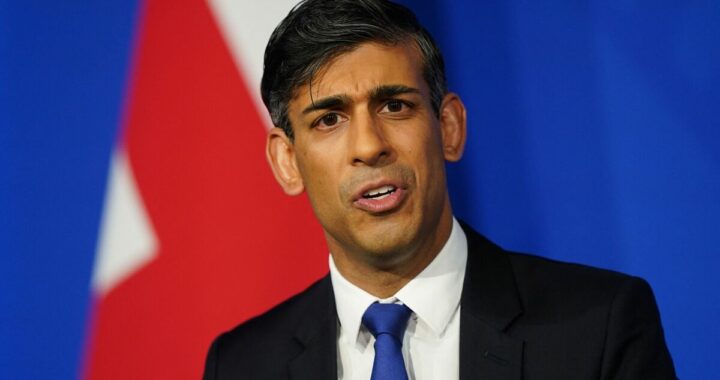Opinion | On the Smoke Crisis, New York City’s Mayor Chokes
4 min read
As apocalyptic smoke bore down on New York City from Canadian wildfires this week, a familiar sensation rose in the acrid, choking air.
New Yorkers, once again, were on their own.
Mayor Eric Adams’s slow, muted response to the unhealthy smoke left the city’s more than eight million residents unprepared, scrambling to protect themselves.
By Tuesday morning, air quality in the city had already greatly deteriorated. But it would be another 24 hours before Mr. Adams held a news conference to address New Yorkers.
So Tuesday night, residents were caught largely off guard, making their way through the evening commute against the backdrop of a burning red sun. That night, Mr. Adams issued a statement at 11:30 p.m. advising the public that the air quality index had reached 218, rising into the “very unhealthy” category. (The A.Q.I. in New York City is usually below 50.)
When Mr. Adams finally did appear before the city to discuss the crisis Wednesday morning, he appeared to admit that the smoke had caught him by surprise, despite a warning as early as Monday from the state’s Department of Environmental Conservation. “It wasn’t until I went outdoors and basically said, ‘What the hell is this?’”
Three years after New York City became an early epicenter of the pandemic, failed by all levels of government, the lack of timely warning, useful guidance and decisive action from Mr. Adams is especially disturbing.
About one in 10 adults in New York State has asthma, a figure that’s higher still in some of the city’s Black and Hispanic neighborhoods. Other New Yorkers have damage to their lungs or immune systems from Covid-19. Others are simply deeply traumatized from remaining isolated in small apartments for months on end. “I woke up wheezing,” one friend with asthma wrote to me, sending a selfie as she used her nebulizer, flashing the peace sign. Emergency room visits involving breathing complaints rose sharply on Wednesday, city data showed.
The wildfires have given cities along the Eastern Seaboard a horrifying taste of the brutal cost of climate change more often borne by others elsewhere.
The mayor can’t solve the climate crisis. But he could have mustered city government agencies more effectively to help get New Yorkers through a tough, hazardous week in the city he was elected to serve.
Residents, for example, need better advance notice of any public health emergency, and not simply on social media, which is how the Adams administration primarily interacted with the public for the first 24 hours of the crisis.
The mayor could have also issued a Code Red, usually used for heat emergencies, to deploy outreach workers to help coax homeless New Yorkers off the street and into shelters. He could have coordinated with the governor to use the subway system announcements to communicate about the smoke with residents. He could have even directed city vehicles like police cars to issue warnings from their loudspeakers.
The mayor could have worked quickly to distribute high-quality N95 masks — and critically, information — to New Yorkers, especially in the city’s most vulnerable communities. Gov. Kathy Hochul, by contrast, directed that masks be distributed in transit hubs and other state-owned facilities, which is a good start. The city’s Fire Department, which reports to the mayor, finally said on Twitter Thursday it would have masks available at certain locations. Good. The Department of Education said all students would shift to remote learning on Friday, rather than just the younger grades, which were already scheduled to have the day off for a “clerical day.”
The city’s enormous municipal government has the capacity to do more to help residents weather this ordeal. During summer heat waves, the city often opens cooling centers. The city could have opened designated clean air centers, deploying air purifiers to school gyms or libraries, offering vulnerable New Yorkers a similar refuge during the smoke crisis. Mr. Adams could have coordinated with the city’s library systems, helping them stay open longer to provide a safe haven for the millions of New Yorkers who live in apartments with poor ventilation.
The mayor could have issued an explicit call for private employers to allow workers to stay home. He could have led by example by clearly directing city workers to do the same, if their job allowed. He could have also used the emergency to limit private car traffic across the five boroughs in a bid to improve air quality. A spokesman for Mr. Adams said in an email that the city’s climate experts said emissions from cars are “not making a sizable difference right now,” and that it would trust the climatologists. For a city struggling to breathe clean air, it would be nice to see everything on the table.
Instead on Wednesday, when reporters questioned the city’s response, Mr. Adams said, “There is no planning for an incident like this.” But of course there are ways to plan for it. It’s hardly the first environmental crisis to hit the city, and it’s exactly the kind of thing the emergency management office should prepare for.
And he got defensive. “What we should really try to prevent doing is to give any indication that this administration did not proactively respond and did not move in the right direction to let New Yorkers know,” he said.
That’s not leadership. It’s damage control.
The Times is committed to publishing a diversity of letters to the editor. We’d like to hear what you think about this or any of our articles. Here are some tips. And here’s our email: [email protected].
Follow The New York Times Opinion section on Facebook, Twitter (@NYTopinion) and Instagram.
Mara Gay is a member of the editorial board. @MaraGay
Source: Read Full Article






